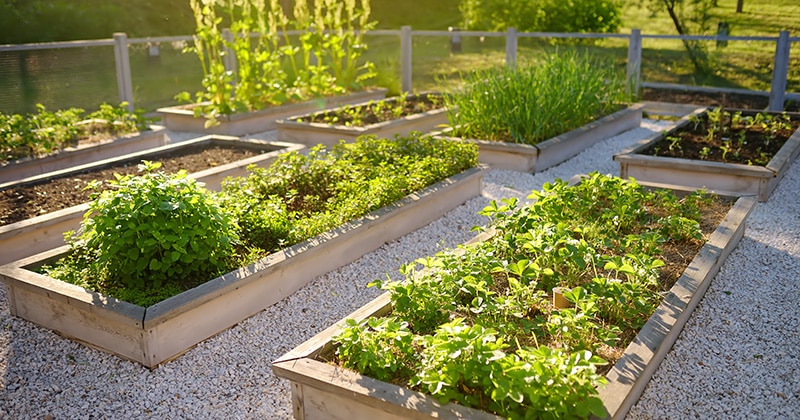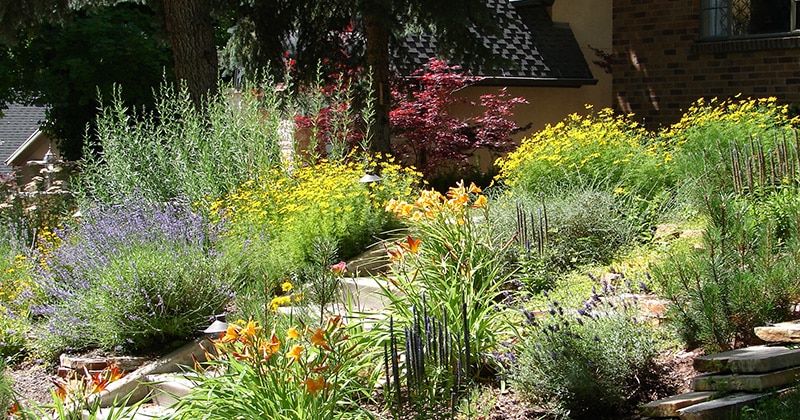13 Lawn Care & Landscaping Industry Trends
Here are 13 of the most important landscaping and lawn care trends shaping the industry today. This article is full of hidden gems that could unlock sustainable growth for your business.

Content Director
The lawn care and landscaping industry is anything but stagnant. In this article, we’ll cover 13 of the most important lawn care trends shaping the industry today.
Grab yourself a cup of coffee, a notebook, and a pen. This one’s full of hidden gems that could unlock sustainable growth for your business.
Today’s Top Landscaping & Lawn Care Industry Trends
Trends, opportunities, and strategies for business growth evolve over time. Keeping up with emerging trends is critical. After all, that’s how you stay one step ahead of your competition.
Here’s what you need to know.
1. Almost Half of Americans Hire Professional Landscapers

Around 40% of Americans use professional lawn care and landscaping services. That’s good news for business owners.
Said another way, there’s no shortage of potential customers out there. With the right digital marketing approach, you can absolutely attract, engage, and convert new customers.
2. The Landscaping Industry Is Growing
The landscaping industry is experiencing consistent growth. Between 2017 and 2022, landscaping services grew by 5.3%.
What does this mean for business owners and landscape professionals?
Keep doing what you’re doing. And more, dream big. We’ll say it again: there’s plenty of opportunity to expand your customer base.
3. A Rebounding Economy Could Improve Demand Even More
The US economy slumped during the COVID-19 pandemic. But now, the pendulum is beginning to swing the other way.
The rebounding economy could easily translate into more disposable income for home and business owners. In turn, that could boost demand for lawn and landscaping services.
4. Households Are Spending More on Their Yards
In 2014, the average North American household spent $317 on lawn care. This amount jumped to $503 in 2017. And the upward trend is expected to continue.
According to a 2022 report, the biggest opportunity for landscaping businesses lies in households earning more than $100,000 annually. They’re more likely to spend money on making their homes look more attractive.
5. The Landscape Industry Has a Low Market Share Concentration
The landscaping and lawn care services industry has a low level of market share concentration. In fact, the top four largest providers account for 5 percent of the industry share.
In layman’s terms, there’s a lot of opportunity for smaller landscaping and lawncare companies to expand. There’s plenty of opportunity to tap into your local market and succeed.
6. Competition Is Increasing
Plenty of entrepreneurs are capitalizing on increasing demand paired with a low market share concentration.
In other words, your competitors in the industry have already noticed the opportunity for growth. They’re taking action.
As of 2022, the United States is home to 636,249 landscaping companies employing more than 1.2 million people. That’s up 5.5% compared to 2021.
California boasts the highest number of landscaping businesses, followed by New York and Florida.
7. Local Businesses Are Seeing a Jump in Demand
Almost one-third of landscaping businesses serving local communities have seen an increase in demand.
Folks continue to spend more time at home. That could easily be driving this trend toward higher demand.
Whatever the root cause, the data is clear. Demand is currently healthy.
8. Homeowners Want Vacation-Worthy Backyards

During the pandemic, travel wasn’t an option. Even now, with fewer restrictions, overseas travel is down 34% compared to pre-pandemic levels.
Instead of jet-setting across the globe, people are spending time off at home. And they want backyards worthy of a five-star staycation.
Holidaying must-haves like ample room for entertainment and outdoor kitchen facilities could be a selling point for many prospects.
9. Edible Gardens Are on the Rise

Inflation is sky-high, and fresh produce isn’t immune to higher prices. Fresh vegetable prices increased by a staggering 9.2% between September 2021 and September 2022.
In response, more and more Americans are turning to edible gardening. 67% of adults grow (or plan to grow) fruit, vegetables, and herbs at home.
Related services, such as raised garden beds, could be in high demand. It might be worth adding them to your offerings.
10. Labor Shortages Could Impact Business Growth
More than two in five landscaping business owners are concerned about a shortage of quality labor. That makes sense. A labor shortage could easily sabotage business growth.
If you have exceptional staff, invest in their professional development. Put real effort into building an inclusive, engaging workplace culture. That kind of vibe encourages employees to stick around.
And if you’re looking for new team members, consider other ways you can add value for employees. Reevaluate your benefits packages, for example.
11. Xeriscaping Is on the Rise

Thanks to climate change, droughts are more severe. Not only that, but they’re more pervasive. They occur more frequently, too.
As a result, interest in xeriscaping is rising.
Xeriscaping is a landscaping approach designed to require very little water. This style of landscaping makes use of vegetation that’s native to the region. It’s particularly popular in dry parts of the country.
If you work in a region prone to drought, consider offering xeriscaping to your clients.
12. Businesses Are Automating Admin Work
Landscaping companies and lawn care professionals spend most of their time outdoors. But technology still plays a central role.
Most administration work is done using technology. For example, you probably use software to schedule appointments or process invoices.
Automation is an effective way to save time. In fact, it’s predicted that 69% of the routine work done by managers be fully automated by 2024.
This is good news for business leaders. Automation can take tedious admin work off your plate. You’ll end up with more time to focus on growing your business.
13. Native Gardens Are On-Trend
As homeowners become more conscious of their impact on the environment, interest in native gardens could rise.
Native plants have many benefits:
- They need less water.
- They reduce air pollution.
- They provide habitats for local wildlife.
- They promote biodiversity.
- That don’t require fertilizer or pesticides.
These advantages save homeowners money. You can capitalize on this trend by offering landscaping services that focus on native plant life.
Ashley’s professional experience includes content creation of all kinds, from articles and infographics to websites and whitepapers. When she’s not working, she enjoys dark coffee, dad jokes, and fiction—mostly horror and urban fantasy.

Business Solutions For Field Service Pros
EverPro offers specialized solutions designed for home and field service professionals. We’ve got the business tools to help you get the job done.



